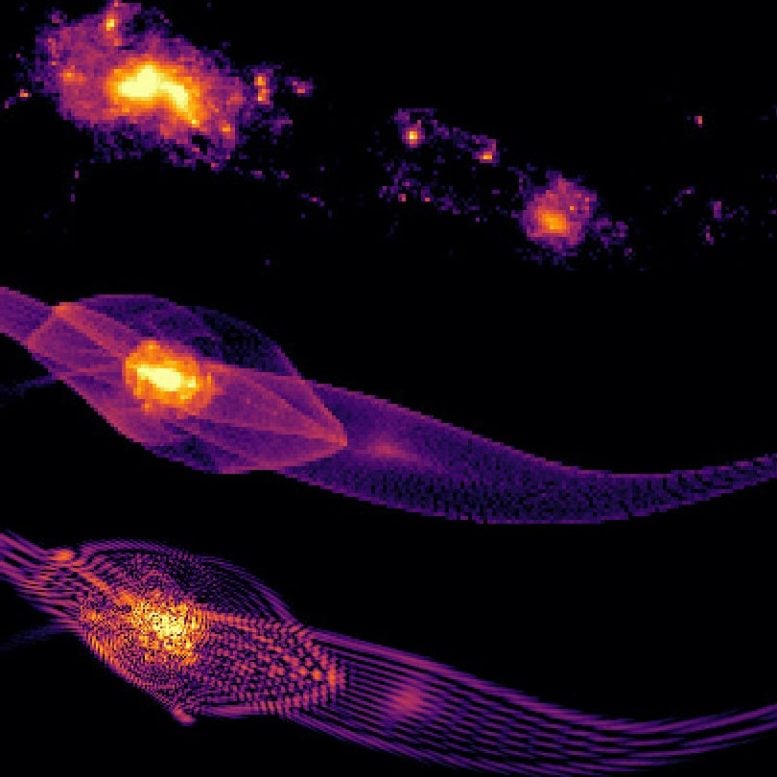
A simulation of early galaxy formation under three dark matter scenarios. In a universe filled with cold dark matter, early galaxies would first form in bright halos (far left). If dark matter is instead warm, galaxies would form first in long, tail-like filaments (center). Fuzzy dark matter would produce similar filaments, though striated (far right), like the strings of a harp. Credit: Image courtesy of the researchers
Scientists simulate early galaxy formation in a universe of dark matter that is ultralight, or “fuzzy,” rather than cold or warm.
Dark matter was likely the starting ingredient for brewing up the very first galaxies in the universe. Shortly after the Big Bang, particles of dark matter would have clumped together in gravitational “halos,” pulling surrounding gas into their cores, which over time cooled and condensed into the first galaxies.
Although dark matter is considered the backbone to the structure of the universe, scientists know very little about its nature, as the particles have so far evaded detection.
Now scientists at MIT, Princeton University, and Cambridge University have found that the early universe, and the very first galaxies, would have looked very different depending on the nature of dark matter. For the first time, the team has simulated what early galaxy formation would have looked like if dark matter were “fuzzy,” rather than cold or warm.
In the most widely accepted scenario, dark matter is cold, made up of slow-moving particles that, aside from gravitational effects, have no interaction with ordinary matter. Warm dark matter is thought to be a slightly lighter and faster version of cold dark matter. And fuzzy dark matter, a relatively new concept, is something entirely different, consisting of ultralight particles, each about 1 octillionth (10-27) the mass of an electron (a cold dark matter particle is far heavier — about 105 times more massive than an electron).
In their simulations, the researchers found that if dark matter is cold, then galaxies in the early universe would have formed in nearly spherical halos. But if the nature of dark matter is fuzzy or warm, the early universe would have looked very different, with galaxies forming first in extended, tail-like filaments. In a fuzzy universe, these filaments would have appeared striated, like star-lit strings on a harp.
As new telescopes come online, with the ability to see further back into the early universe, scientists may be able to deduce, from the pattern of galaxy formation, whether the nature of dark matter, which today makes up nearly 85 percent of the matter in the universe, is fuzzy as opposed to cold or warm.
“The first galaxies in the early universe may illuminate what type of dark matter we have today,” says Mark Vogelsberger, associate professor of physics in MIT’s Kavli Institute for Astrophysics and Space Research. “Either we see this filament pattern, and fuzzy dark matter is plausible, or we don’t, and we can rule that model out. We now have a blueprint for how to do this.”
Vogelsberger is a co-author of a paper appearing today in Physical Review Letters, along with the paper’s lead author, Philip Mocz of Princeton University, and Anastasia Fialkov of Cambridge University and previously the University of Sussex.
Fuzzy waves
While dark matter has yet to be directly detected, the hypothesis that describes dark matter as cold has proven successful at describing the large-scale structure of the observable universe. As a result, models of galaxy formation are based on the assumption that dark matter is cold.
“The problem is, there are some discrepancies between observations and predictions of cold dark matter,” Vogelsberger points out. “For example, if you look at very small galaxies, the inferred distribution of dark matter within these galaxies doesn’t perfectly agree with what theoretical models predict. So there is tension there.”
Enter, then, alternative theories for dark matter, including warm, and fuzzy, which researchers have proposed in recent years.
“The nature of dark matter is still a mystery,” Fialkov says. “Fuzzy dark matter is motivated by fundamental physics, for instance, string theory, and thus is an interesting dark matter candidate. Cosmic structures hold the key to validating or ruling out such dark matter models.”
Fuzzy dark matter is made up of particles that are so light that they act in a quantum, wave-like fashion, rather than as individual particles. This quantum, fuzzy nature, Mocz says, could have produced early galaxies that look entirely different from what standard models predict for cold dark matter.
“Even though in the late universe these different dark matter scenarios may predict similar shapes for galaxies, the first galaxies would be strikingly different, which will give us a clue about what dark matter is,” Mocz says.
To see how different a cold and a fuzzy early universe could be, the researchers simulated a small, cubic space of the early universe, measuring about 3 million light-years across, and ran it forward in time to see how galaxies would form given one of the three dark matter scenarios: cold, warm, and fuzzy.
The team began each simulation by assuming a certain distribution of dark matter, which scientists have some idea of, based on measurements of the cosmic microwave background — “relic radiation” that was emitted by, and was detected just 400,000 years after, the Big Bang.
“Dark matter doesn’t have a constant density, even at these early times,” Vogelsberger says. “There are tiny perturbations on top of a constant density field.”
The researchers were able to use existing algorithms to simulate galaxy formation under scenarios of cold and warm dark matter. But to simulate fuzzy dark matter, with its quantum nature, they needed a new approach.
A map of harp strings
The researchers modified their simulation of cold dark matter, enabling it to solve two extra equations in order to simulate galaxy formation in a fuzzy dark matter universe. The first, Schrödinger’s equation, describes how a quantum particle acts as a wave, while the second, Poisson’s equation, describes how that wave generates a density field, or distribution of dark matter, and how that distribution leads to gravity — the force that eventually pulls in the matter to form galaxies. They then coupled this simulation to a model that describes the behavior of gas in the universe, and the way it condenses into galaxies in response to gravitational effects.
In all three scenarios, galaxies formed wherever there were over-densities, or large concentrations of gravitationally collapsed dark matter. The pattern of this dark matter, however, was different, depending on whether it was cold, warm, or fuzzy.
In a scenario of cold dark matter, galaxies formed in spherical halos, as well as smaller subhalos. Warm dark matter produced the first galaxies in tail-like filaments, and no subhalos. This may be due to warm dark matter’s lighter, faster nature, making particles less likely to stick around in smaller, subhalo clumps.
Similar to warm dark matter, fuzzy dark matter formed stars along filaments. But then quantum wave effects took over in shaping the galaxies, which formed more striated filaments, like strings on an invisible harp. Vogelsberger says this striated pattern is due to interference, an effect that occurs when two waves overlap. When this occurs, for instance in waves of light, the points where the crests and troughs of each wave align form darker spots, creating an alternating pattern of bright and dark regions.
In the case of fuzzy dark matter, instead of bright and dark points, it generates an alternating pattern of over-dense and under-dense concentrations of dark matter.
“You would get a lot of gravitational pull at these over-densities, and the gas would follow, and at some point would form galaxies along those over-densities, and not the under-densities,” Vogelsberger explains. “This picture would be replicated throughout the early universe.”
The team is developing more detailed predictions of what early galaxies may have looked like in a universe dominated by fuzzy dark matter. Their goal is to provide a map for upcoming telescopes, such as the James Webb Space Telescope, that may be able to look far enough back in time to spot the earliest galaxies. If they see filamentary galaxies such as those simulated by Mocz, Fialkov, Vogelsberger, and their colleagues, it could be the first signs that dark matter’s nature is fuzzy.
“It’s this observational test we can provide for the nature of dark matter, based on observations of the early universe, which will become feasible in the next couple of years,” Vogelsberger says.
For more on this study, read New ‘Fuzzy’ Dark Matter Simulations Disrupt Conventional Thinking About Make-Up of the Universe.
Reference: “First Star-Forming Structures in Fuzzy Cosmic Filaments” by Philip Mocz, Anastasia Fialkov, Mark Vogelsberger, Fernando Becerra, Mustafa A. Amin, Sownak Bose, Michael Boylan-Kolchin, Pierre-Henri Chavanis, Lars Hernquist, Lachlan Lancaster, Federico Marinacci, Victor H. Robles, and Jesús Zavala, 2 October 2019, Physical Review Letters.
DOI: 10.1103/PhysRevLett.123.141301
This research was supported, in part, by NASA.

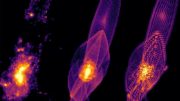
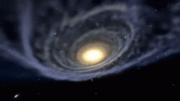
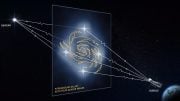
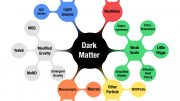
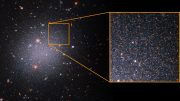



Dark matter is ‘fuzzy’. Fuzzy dark matter’s quantum, wave-like behavior is de Broglie’s “subquantic medium”.
Particles of ordinary matter move through and displace the fuzzy dark matter, causing it to wave. Wave-particle duality is a moving particle *and* its associated wave in the fuzzy dark matter.
In a double-slit experiment it is the fuzzy dark matter that waves. In a double-slit experiment the particle always travels through a single slit and the associated wave in the fuzzy dark matter passes through both. As the wave exits the slits it creates wave interference which alters the direction the particle travels as it exits a single slit. Over time the particles form an interference pattern. Strongly detecting the particle exiting a single slit destroys the cohesion between the particle and its associated wave, the particle continues on the trajectory it was traveling and does not form an interference pattern.
The fuzzy dark matter ripples when galaxy clusters collide and waves in a double-slit experiment, allowing general relativity to be compatible with quantum mechanics.
The “missing mass” associated with dark matter is the mass of the fuzzy dark matter connected to and neighboring a galaxy which is displaced by the galaxy.
Yada yada yada. Please cite one verifiable scientific EXPERIMENT that lends support to any of your speculations above, or better yet, why don’t YOU design one scientific experiment that could disprove your speculations and let us know what that is. Oh, and by the way, that’s called science.
Right, make a bunch of assumptions, feed those assumptions into a computer simulation and “modify” it until it simulates your assumptions. Got to call Bravo Sierra on this one.
… yeah, the property of dark matter might emerge from its building blocks. One more thing, the vacuum was, … well look it up on Wikipedia…
And some time ago, not that long, people believed that maggots were coming from nowhere, and that they were growing from nothing, … and then you get something. Well, fly’s…
That is how Spider man came into life, well no, but … it is over sarcastic…
I agree with mpc775 that dark matter is likely fuzzy, and on 2 slit experiment, but I postulated over 20 years ago a model of the Universe based on one dynamic multidimensional quantum unit of space itself I called the ‘APE’ (quantum space, quantum Time, quantum density. All in one entity) that creates all space/time/energy/matter/fields/curvature/forces including quantum mechanism of gravity.No new units are created nor destroyed, past, present or future, and still creates expanding and contracting universe. Everything is emergent. But I disagree with gadfly giznot, I couldn’t prove my theory 20 years ago because I didn’t have the equipment or computing power to prove scientifically my theory. I only proved proof of concept. It is up to the rest of the scientific community (with their resources) to catch up to my ideas and disprove or modify my theory. So far they have slowly started to catch up with some of my ideas, but they need a few more years to get there. Mr Andrew Pepes. apepes.com
Bunch of Dummies. “dark matter”, stupid nerd name btw. Is just mass bleeding through dimensional boundry’s. Matter rules all. Dummies.
Dark matter circulates since the first accretion started. There are galactic and solar circulations. The difference in rate and direction between dark matter and baryonic matter results in plasma physics and electro magnetic fields.
is it possible dark matter is something from whatever it is our universe is expanding into?
Vrneni scholingerova kocoura způsobuje kvantová koherence kdy se zaměřujeme na b0d, ale ruší nám to b0d ten samý trochu jinde. A dělá to ten kocour když přemýšlí jsem živý, jsem mrtvý. Do proti mu stojí antihmota, která ihned jeho tvrzení vyvrací. To je důvod proč nelze dovršit přechod.
Thomo BOHRúška G.R.U.úška, úši TH EAR TH
Autoexec.bat first And last qpOcitac hruska VIrus x neVIrus. BOHruska, BOH ruska.
No assumptions. Temperature change is the manifestation of topological bifurcation, and its physical essence is the change of symmetry of a topological VA pairs system, rather than the violation of symmetry.